Inferring mass in complex physical scenes via probabilistic simulation
Presented by Jessica Hamrick
MathPsych, August 6th, 2013
In collaboration with:
Peter Battaglia
Tom Griffiths
Josh Tenenbaum


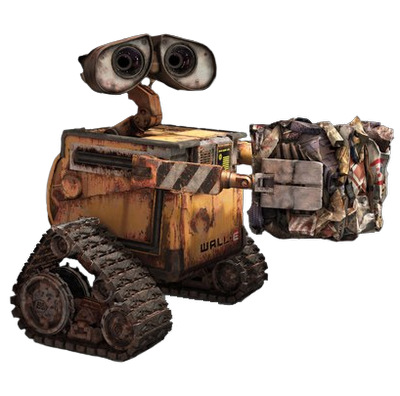
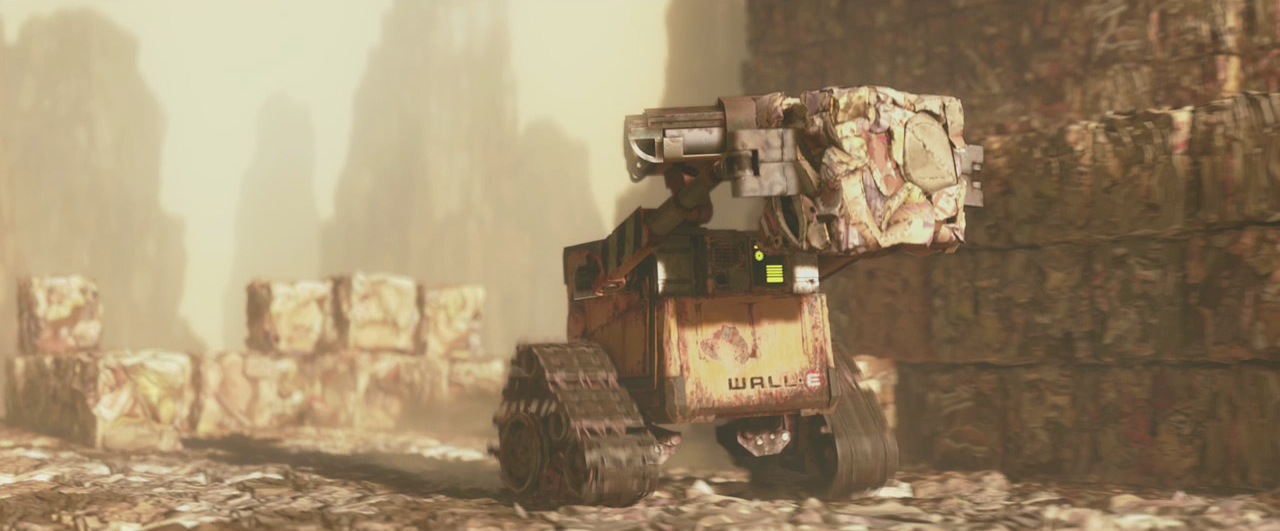

Found photo: a soldier (?) rushing out of the way of an unstable bombed-out building in what seems to be post-blitz France. Flickr.com. Retrieved July 15th, 2013, http://www.flickr.com/photos/theeerin/8515832971/

Grub, M. Gravity Glue. Retrieved February 21st, 2013, from http://www.gravityglue.com/
Questions
How do people reason about the physical world?
How do people infer the parameters of physical objects?

Lagerek, C. Forklift truck lifting large container high in the air. Shutterstock.com. Retrieved February 2nd, 2013, from http://www.shutterstock.com/pic.mhtml?id=5677750
Inferring mass in two-body collisions
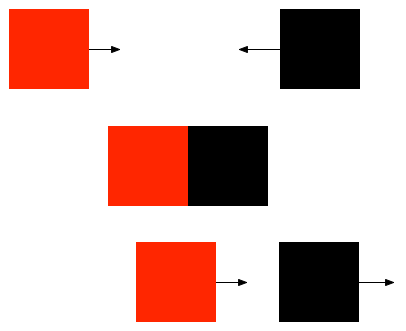
Todd & Warren (1982); Gilden & Proffitt (1989); Runeson, Juslin, & Olsson (2000); Hecht (1996)
Sanborn, Mansingkha, & Griffiths (2013)
Physical predictions in complex scenes

Hamrick, Battaglia, & Tenenbaum (2011); Battaglia, Hamrick, & Tenenbaum (under review)
Physical predictions in complex scenes
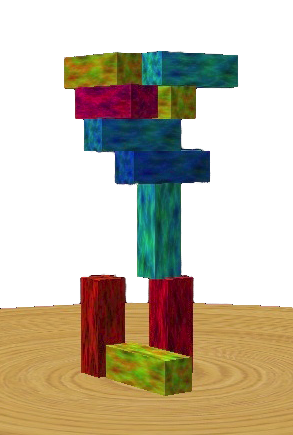
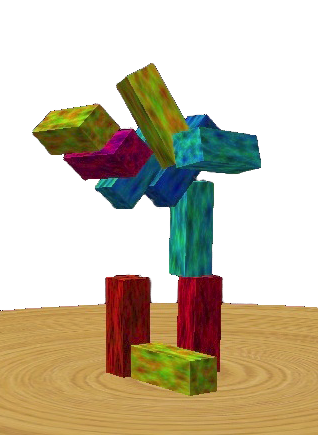

Hamrick, Battaglia, & Tenenbaum (2011); Battaglia, Hamrick, & Tenenbaum (under review)
People can:
- Infer mass in simple scenes
- Make predictions in complex scenes
Can people infer mass in complex scenes?
Which color is heavier?
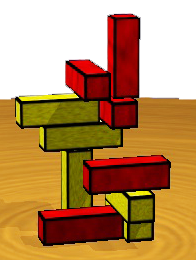

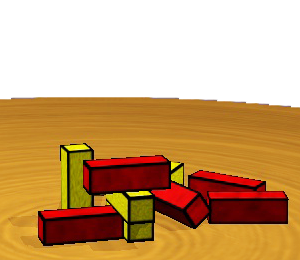
Trial Structure
(2 possible trial orderings)
- View tower
- Answer "will it fall?"
- Observe feedback
- Binary text feedback
- Video and text feedback
- (Some trials) Answer "which color is heavier?"


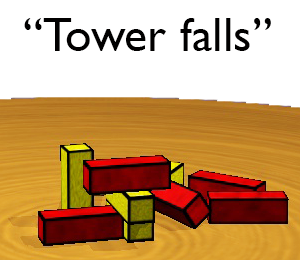
Feedback mass ratios

Feedback mass ratios
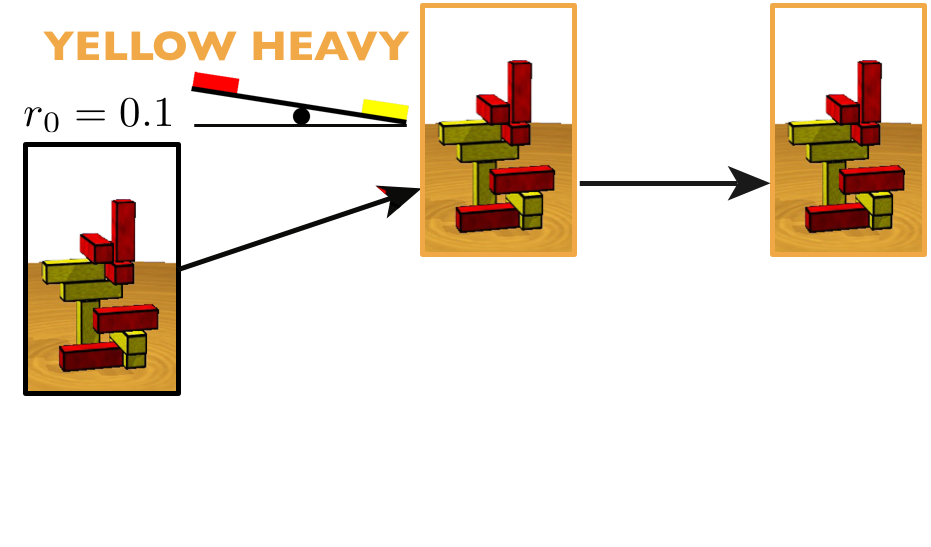
Feedback mass ratios
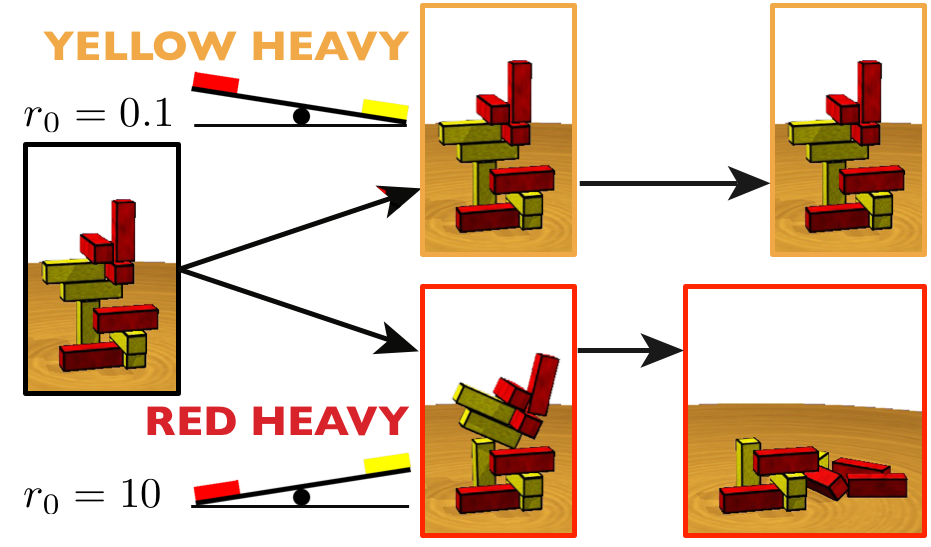
"Which is heavier?": Trial 8
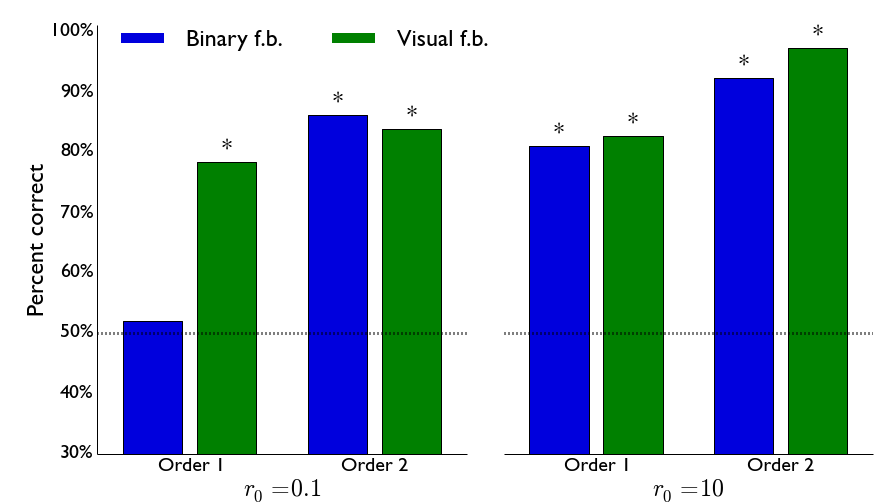
"Which is heavier?": Trial 1
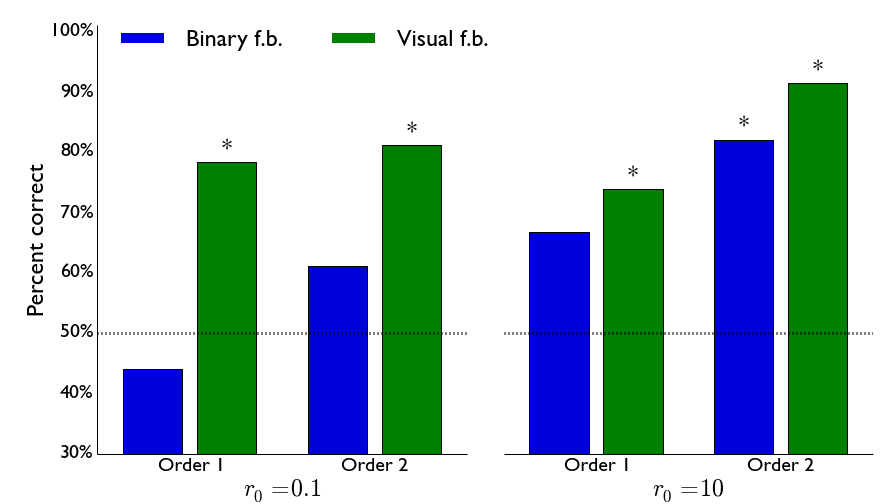
People can:
- Infer mass in simple scenes
- Make predictions in complex scenes
- Infer mass in complex scenes
How?
Modeling people's inferences
Combine two approaches:
Simulation-based physics knowledge
Hamrick et al. (2011); Battaglia et al. (under review)Rational approach to inferring physical parameters
Sanborn et al. (2009; 2013)
"Intuitive Physics Engine" (IPE)
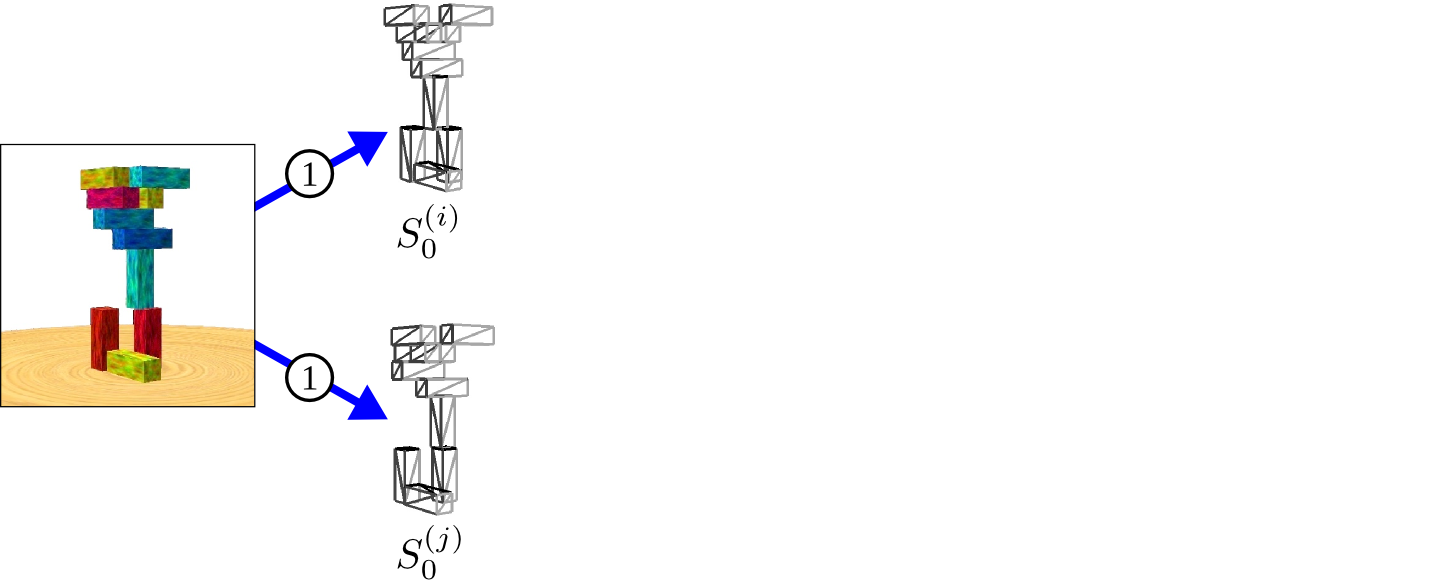
1. Perception
Hamrick, Battaglia, & Tenenbaum (2011); Battaglia, Hamrick, & Tenenbaum (under review)
Perceptual Samples

"Intuitive Physics Engine" (IPE)
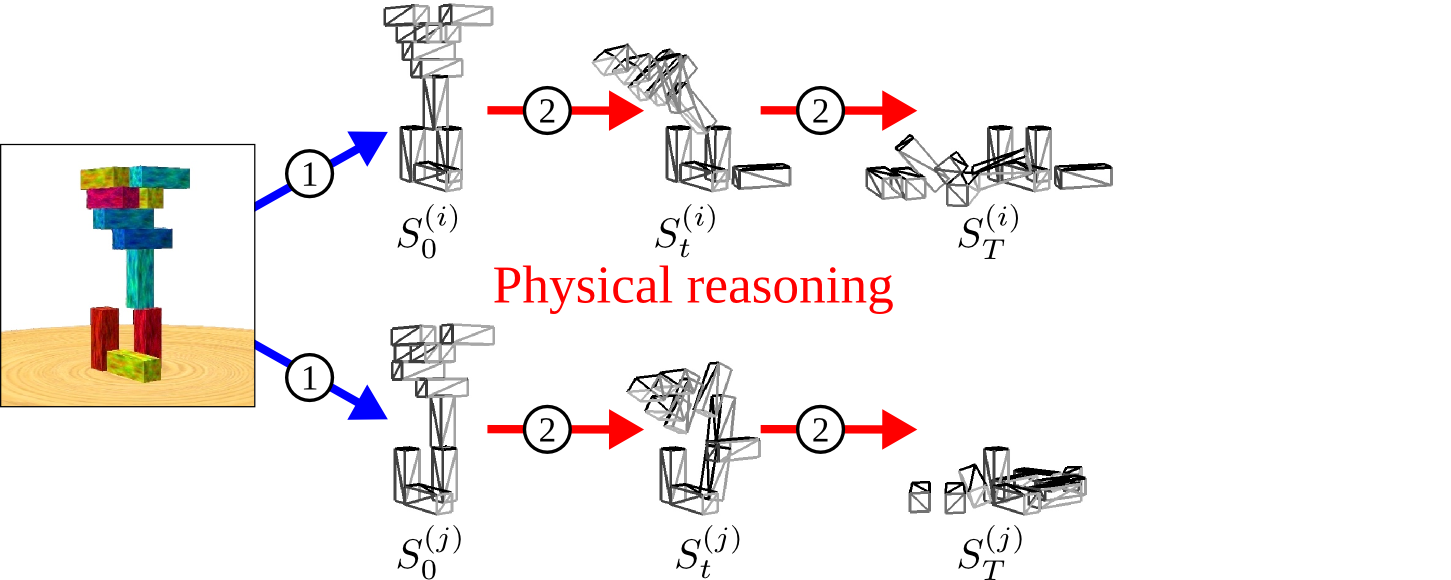
2. Physical Reasoning
Hamrick, Battaglia, & Tenenbaum (2011); Battaglia, Hamrick, & Tenenbaum (under review)
"Intuitive Physics Engine" (IPE)
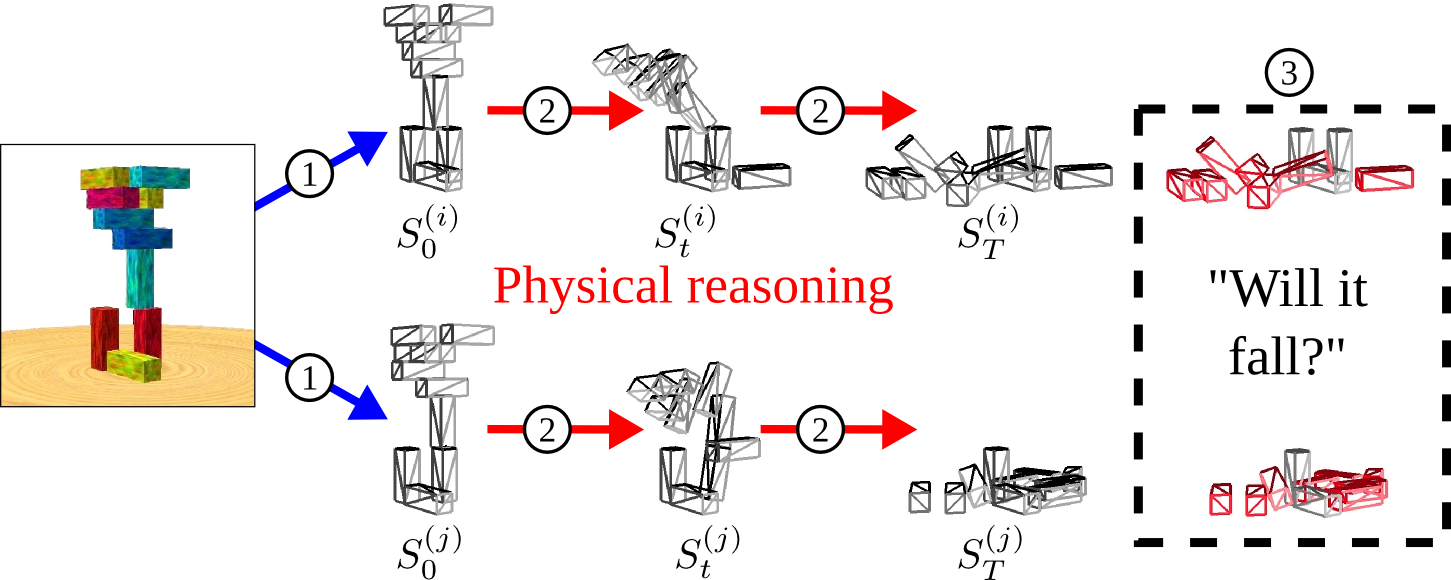
3. Decision
Hamrick, Battaglia, & Tenenbaum (2011); Battaglia, Hamrick, & Tenenbaum (under review)
Belief updating

Belief updating

Belief updating
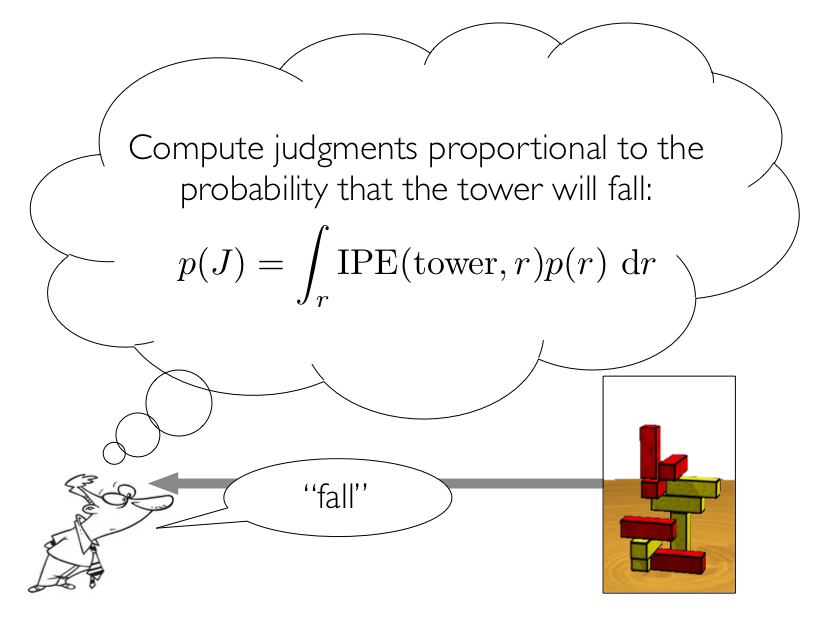
Belief updating
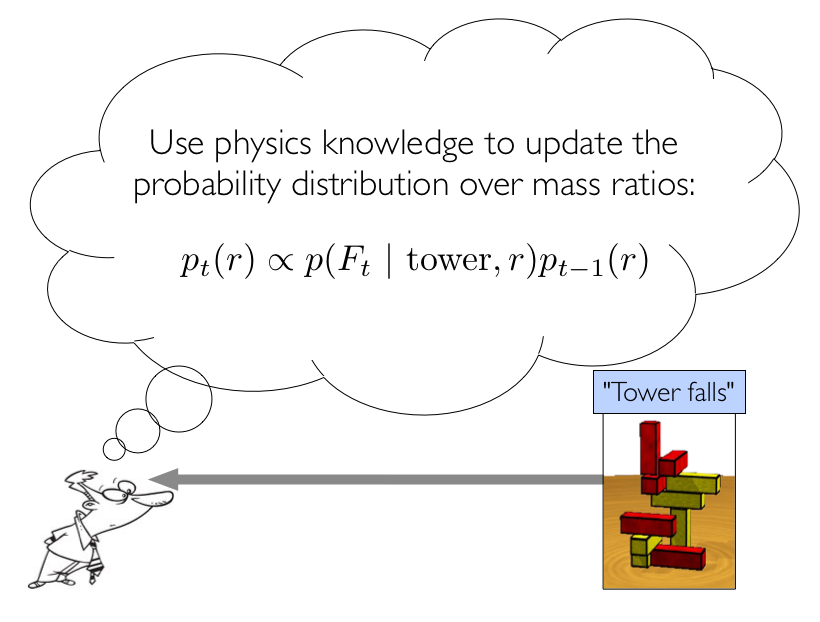
Models
Random
Guesses "will fall" 50% of the time, and "won't fall" the other 50%.
\[p(J) = 0.5\]
Fixed-belief IPE
Uses IPE to make predictions, but ignores feedback/does not update beliefs about mass.
\[p_t(r\ |\ \mathrm{tower}, F_t) = p_{t-1}(r)\]
Learning IPE
Uses IPE to make predictions and to update beliefs about mass.
\[p_t(r\ |\ \mathrm{tower}, F_t)\propto p(F_t\ |\ \mathrm{tower}, r)p_{t-1}(r)\]
Model Comparison: "Will it fall?"
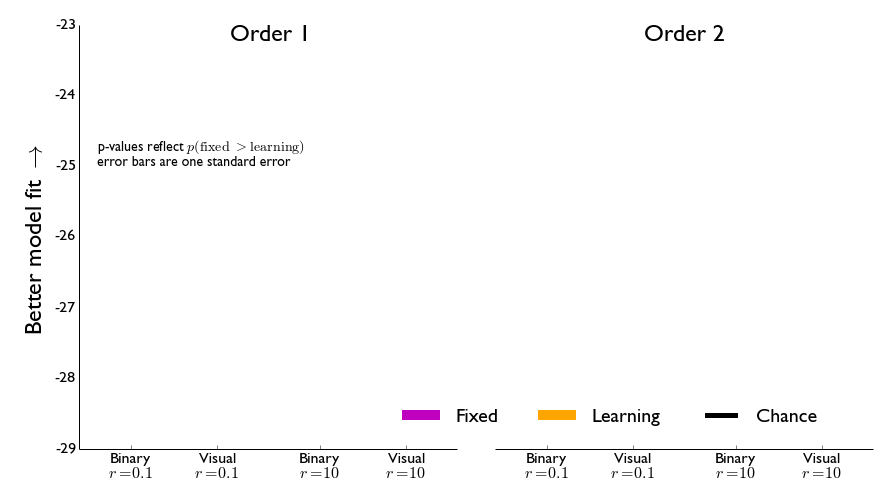
Model Comparison: "Will it fall?"
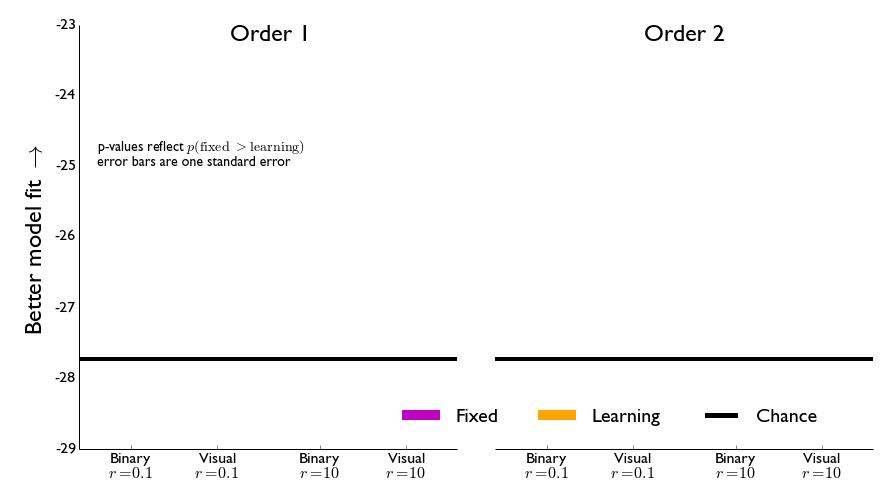
Model Comparison: "Will it fall?"
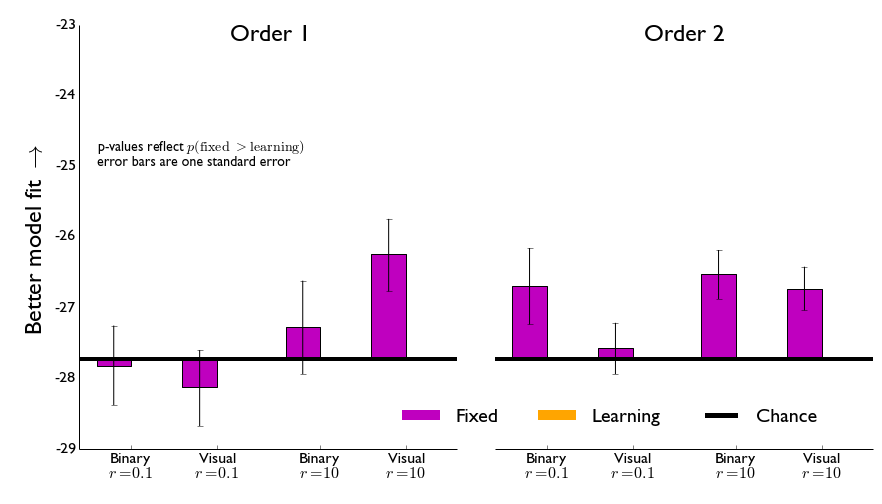
Model Comparison: "Will it fall?"
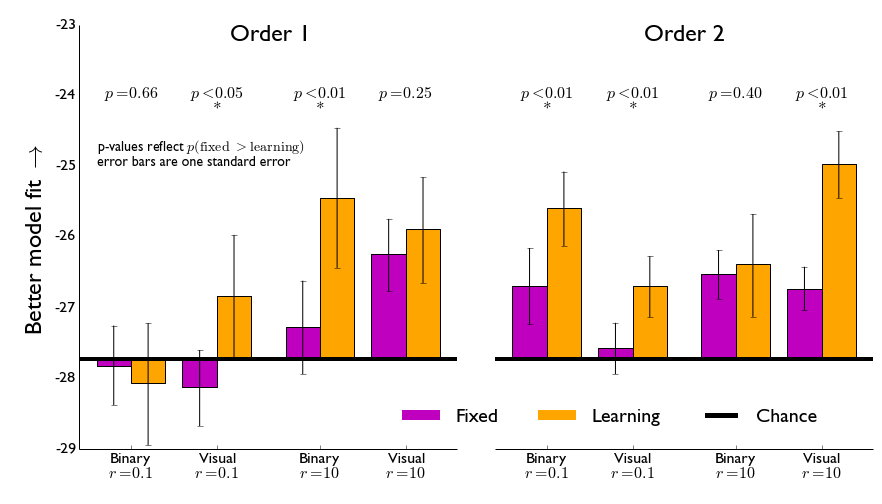
Future Questions
How much do people get from a single trial?
- Is evidence as computed by the model predictive of people’s accuracy on “which is heavier?”
What extra information is in visual feedback?
- Direction
- Number of blocks
- Which blocks
- ...
Primacy effects?
- Is it due to imperfect/noisy belief updating?
- What resource limitations would cause that?
People can:
- Infer mass in simple scenes
- Make predictions in complex scenes
- Infer mass in complex scenes
- With or without video feedback
- One shot learning
General behavior explained by:
- Approximate Newtonian knowledge
- Rational inference of unobserved parameters
This is an important step towards understanding how people learn about the environment around them, and gives a framework for modeling their behavior in physical scenarios.
Thanks!
Extra slides
Model Comparison: "Which is heavier?"
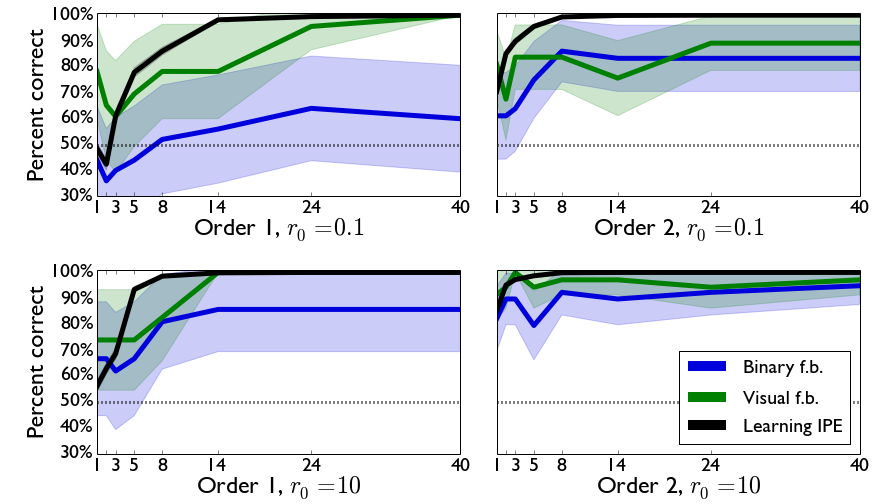
Ideal Observer Beliefs

Mass tower pairs

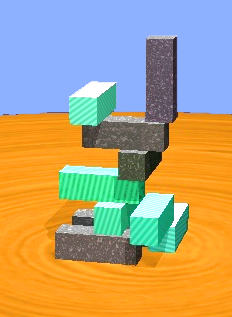
Battaglia, Hamrick, & Tenenbaum (under review)
Heuristics
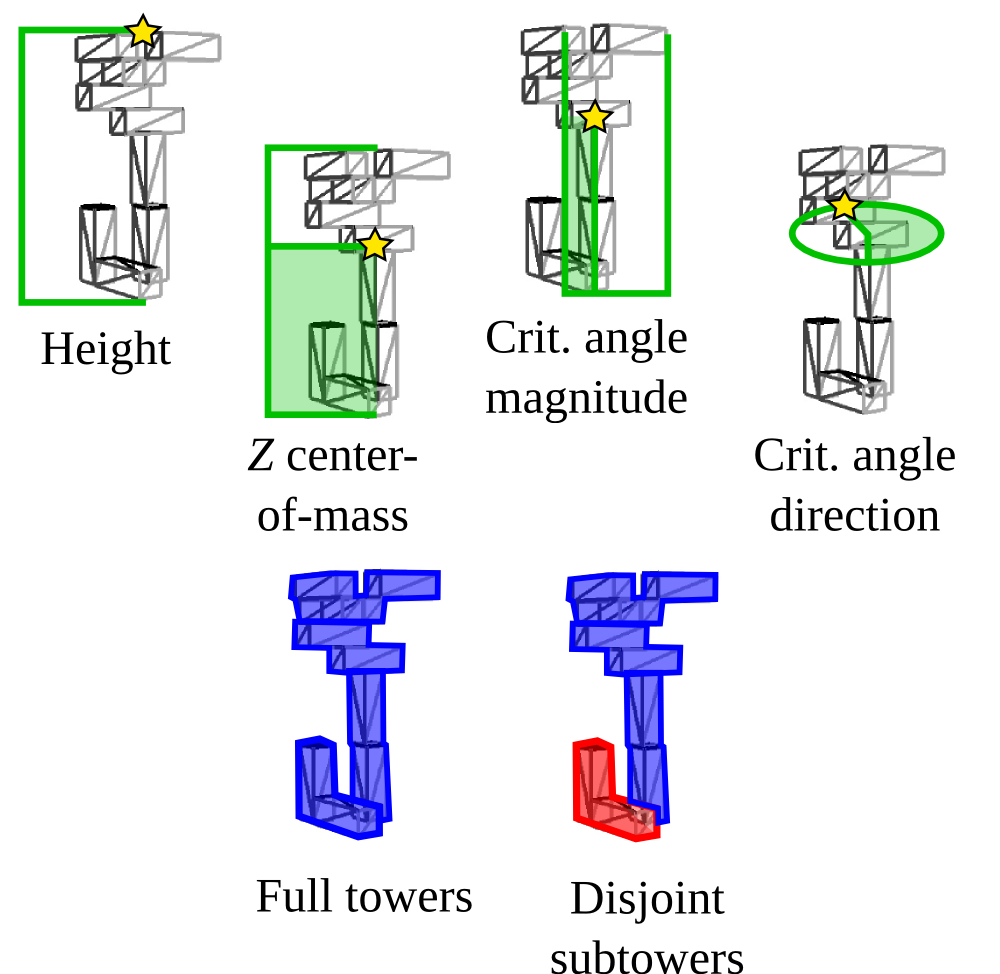
Battaglia, Hamrick, & Tenenbaum (under review)
Previous IPE results
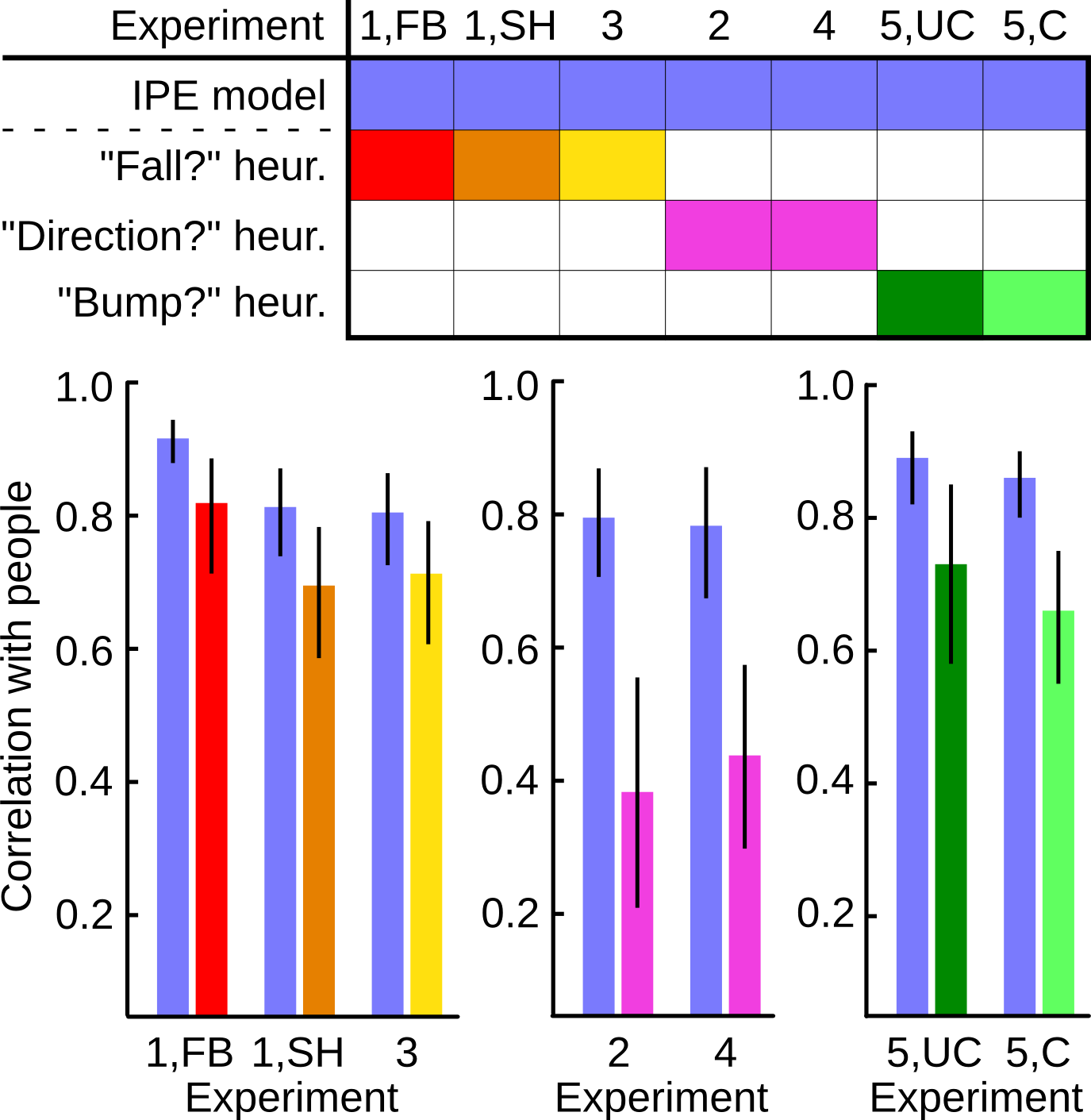
Battaglia, Hamrick, & Tenenbaum (under review)
Mass-sensitive stability results
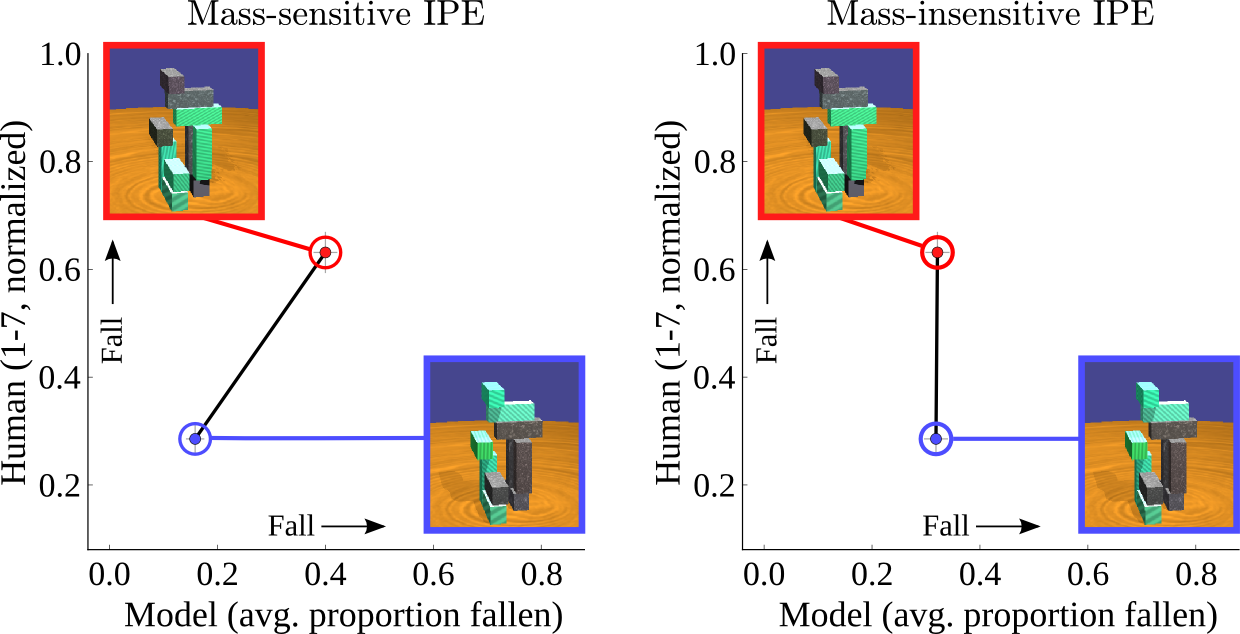
Battaglia, Hamrick, & Tenenbaum (under review)
Mass-sensitive stability results
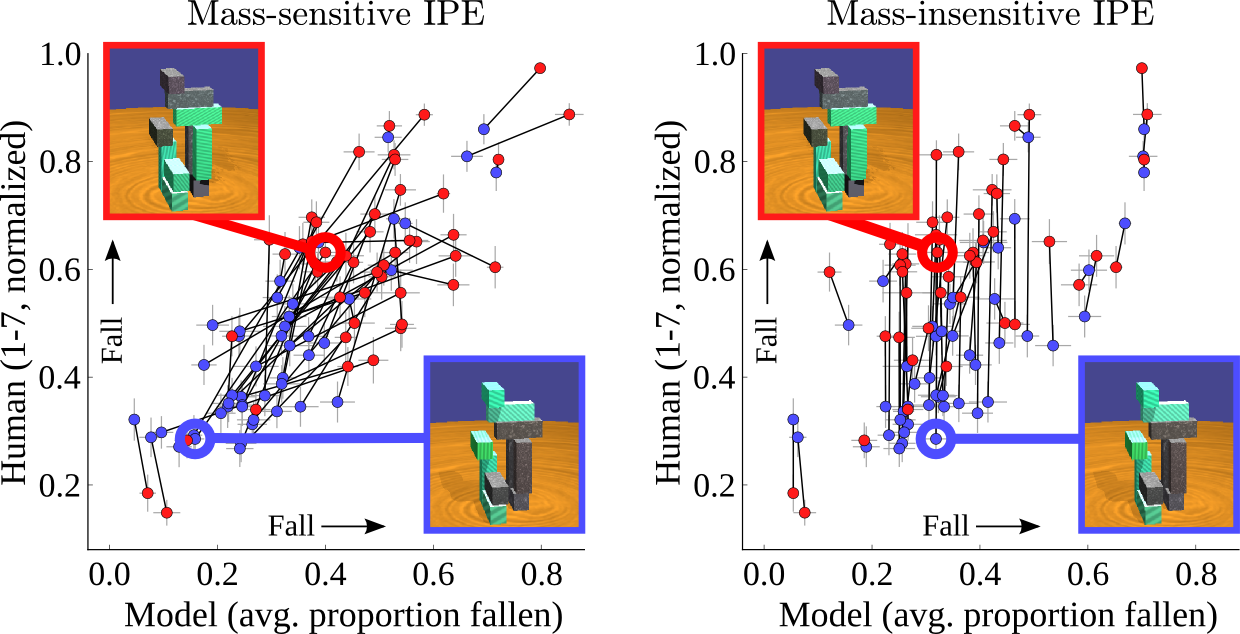
Battaglia, Hamrick, & Tenenbaum (under review)
Mass-sensitive direction results

Battaglia, Hamrick, & Tenenbaum (under review)
Mass-sensitive direction results
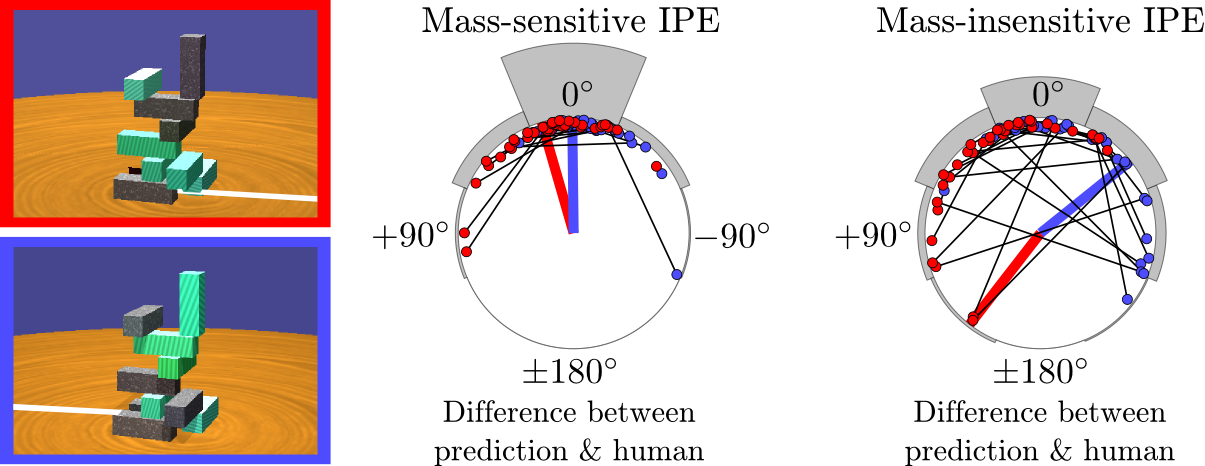
Battaglia, Hamrick, & Tenenbaum (under review)